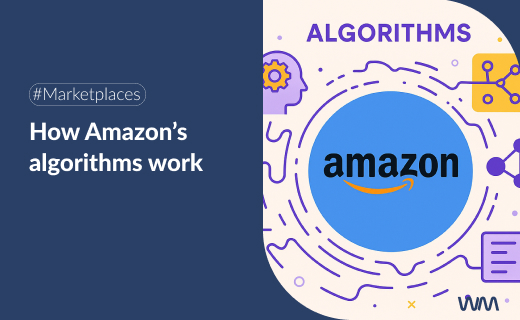In the world of e-commerce, where every click costs and every second counts, understanding your numbers is no longer optional — it’s a matter of survival. And if there’s one metric you absolutely must master to know whether your ad campaigns are working (or if you’re flushing money down the digital drain), it’s ROAS.
ROAS — Return on Ad Spend — is like the thermometer of your advertising profitability. It doesn’t measure likes, impressions, or traffic. It measures something much simpler: how much money you get back for every euro you invest in advertising.
And if you sell online — whether on Amazon, Temu, Shein, your own store, or any other channel — not understanding this metric could mean the difference between scaling your business or getting stuck without margin or liquidity.
So… what exactly is ROAS?
ROAS stands for Return on Ad Spend. It’s a metric that compares the revenue you generate against what you invest in a specific advertising campaign.
The formula is simple but powerful:
ROAS = Revenue Generated / Advertising Spend
Here’s a real example: imagine you launch a campaign on Amazon Ads or Google Ads. You invest €1,000, and that campaign generates €4,000 in direct sales. The calculation would be:
ROAS = €4,000 / €1,000 = 4
This means that for every euro you invested, you generated 4 euros. In other words: you’re making money, and the campaign is working.
What is considered a “good” ROAS?
Every e-commerce business asks this, and the short answer is: it depends. There’s no universal magic number because the ideal ROAS depends on several factors:
-
The type of product you sell (high margin or low margin?)
-
Your associated costs (logistics, marketplace commissions, returns, etc.)
-
Your business model
-
The channel where you’re advertising
Still, as a general reference, these are typical figures:
| ROAS | What it Means |
|---|---|
| <1 | You’re losing money: spending more than you’re earning |
| 1–2 | Not profitable (unless you have a very high LTV) |
| 3–4 | Acceptable, if your margins are healthy |
| 5+ | Very good performance |
According to WordStream, the average ROAS in e-commerce hovers around 4:1. But be careful: a store with 15% profit margins needs a much higher ROAS than one with 60% margins. Comparing blindly can be fatal.
How is ROAS different from ROI?
ROAS only measures the return from your advertising spend, while ROI (Return on Investment) includes all business-related costs: product costs, shipping, packaging, returns, etc.
Imagine you run a campaign that generates €10,000 with a ROAS of 5, but the product costs €8,000. Is it profitable? It depends on the ROI — not just the ROAS. So, while ROAS is an essential compass for campaign optimization, it should never be analyzed in isolation.
How to improve your ROAS?
There’s no one-size-fits-all recipe, but there are many effective strategies:
-
Better audience segmentation: stop shooting at everyone and focus on real potential buyers.
-
Improve your landing page or product page: if your traffic doesn’t convert, your ROAS will collapse.
-
Optimize keywords: both in Amazon and Google, some terms convert and others just waste money.
-
Constant A/B testing: tweak creatives, copy, CTAs — sometimes a small change makes a big difference.
-
Cut unnecessary spend: many e-commerce businesses pay for clicks from users who would have bought anyway — sharpen your targeting.
Practical Cases: How ROAS impacts Amazon or Temu
On platforms like Amazon, ROAS has become a critical metric. Amazon Advertising even includes it by default in its reports, as it’s one of the most closely monitored KPIs for sellers.
Imagine this scenario: you invest €2,000 in a Sponsored Products campaign and generate €6,000. A ROAS of 3. But then you review your margins: product costs are 50%, plus a 15% Amazon commission. Suddenly, things don’t look so good, right?
Another critical factor: how long it takes Amazon to pay you. Even if you achieve a strong ROAS, if Amazon settles your earnings every 14 or 20 days, you won’t have cash available to quickly reinvest in more stock or campaigns.
That’s where solutions like daily payment advances come in, allowing you to reinvest without waiting for the next settlement. Because a good ROAS without liquidity is like a Ferrari without gas.
What else should you track besides ROAS?
ROAS is powerful, yes — but it’s not the only metric that matters. To get the full picture, keep an eye on:
-
CAC (Customer Acquisition Cost): how much it costs you to get a new customer.
-
LTV (Lifetime Value): how much a customer brings over their lifecycle.
-
Conversion rate: if your store converts poorly, no ad can save it.
-
Real net margin: because what matters is not how much you bill, but how much you keep.
Conclusion: ROAS as a control tool (not the ultimate goal)
Tracking ROAS isn’t just for campaign experts. It’s an indispensable tool for anyone investing in digital advertising with the goal of profitability. Whether you’re a small Amazon seller or a consolidated e-commerce brand with hundreds of SKUs, understanding ROAS is critical.
What matters is not just knowing your current ROAS, but also understanding what influences it, how to improve it, and how to connect it to the real financial health of your business.
Because in the end, a profitable campaign is one that converts, generates sustainable income, and allows you to grow with control.
Want help analyzing how your liquidity could boost your ad campaigns?
At Wannme, we help sellers keep up their growth momentum by advancing their daily payments. Because if you sell today, you should get paid tomorrow.






